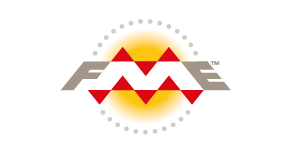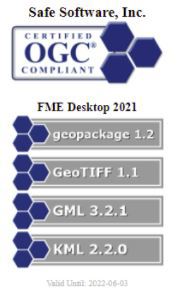It’s official! FME is OGC certified


FME 2021 is now certified as compliant for four key data format standards with the Open Geospatial Consortium (OGC). The four formats are:
- Geographic Markup Language (GML), a format you might be used to when consuming Ordnance Survey data.
- Keyhole Markup Language (KML), the format you’ll likely most commonly associate with Google Earth.
- Geopackage, the platform independent compact format for transferring geospatial information, that’s increasingly supported on mobile platforms; and
- GeoTIFF, the geographically tagged variation of the ‘Tag Image File Format’ popular for the storage of raster imagery.
Now whether you’ve heard of the FME Platform before or not, an announcement like this might seem a little odd. So just to be clear, we’re not saying that these formats are finally supported for reading and writing in FME, that’s actually been possible for many years. In fact, FME’s main strength is its ability to connect to your data pretty much wherever and however you’d like to store it. So, on that basis, being able to read and write data between over 450 formats, across numerous standards is vital to FME staying relevant in our fast-paced data industry. But what we are highlighting is that this is actually the first time Safe Software have received official certification and endorsement from the OGC for FME and that’s rather a historic moment, worthy of more than just a by-line.
But who are the OGC and why do they matter? Well, they’re a worldwide community committed to improving access to geospatial, or location information and the mantra core to their mission is to make that information FAIR; that is – Findable, Accessible, Interoperable, and Reusable. Core to that mantra is the formulation and documentation of publicly available geospatial standards that allow systems, hardware and software to effectively communicate with each other, knowing that data is going to be exchanged in a standardised and importantly a structured way. Put simply, adhering to standards is vital to ensuring that data chains don’t break, and that information gets to where it needs to be, when and how it needs to be there. There’s a great overview video on YouTube that explains a little more.
If you’d like to find out more about the recent certification, you can review the formats for which FME 2021 is now officially endorsed, along with more than a dozen other formats that are also under consideration over at the OGC website. Safe Software have some documentation and links to some useful tutorials on the FME Community too, that are a useful reference.
Finally, if you’re interested in purchasing FME or you’d just like to ask us something specific about the platform, feel free to reach out to the 1Spatial FME Division at fme@1spatial.com.

